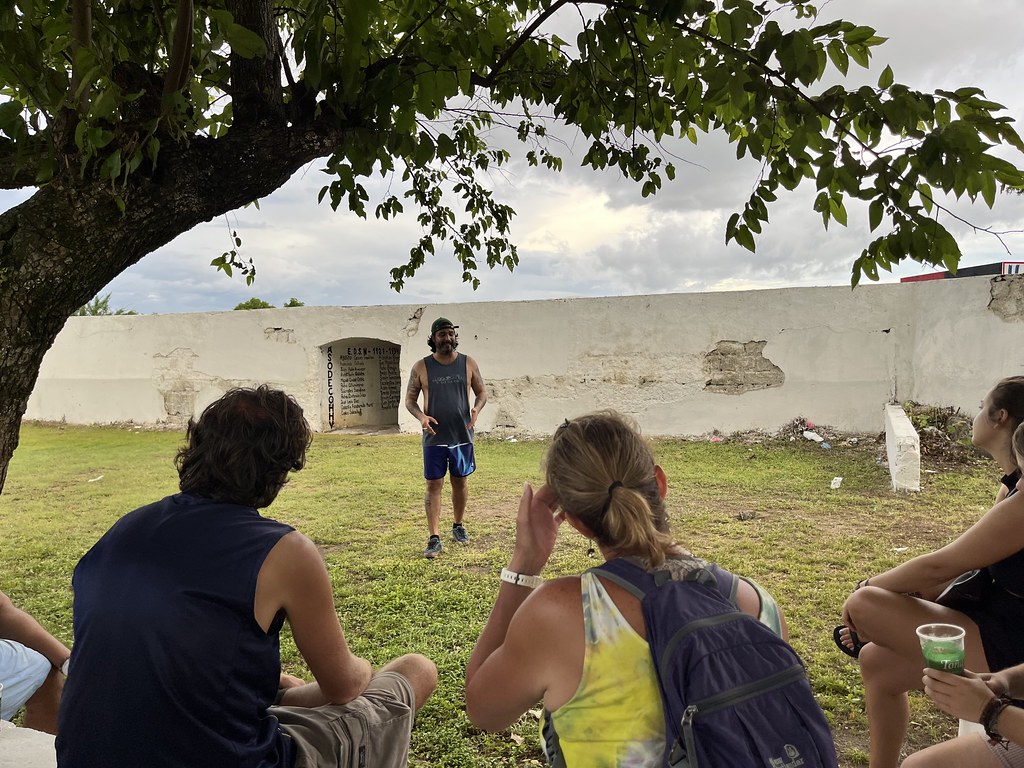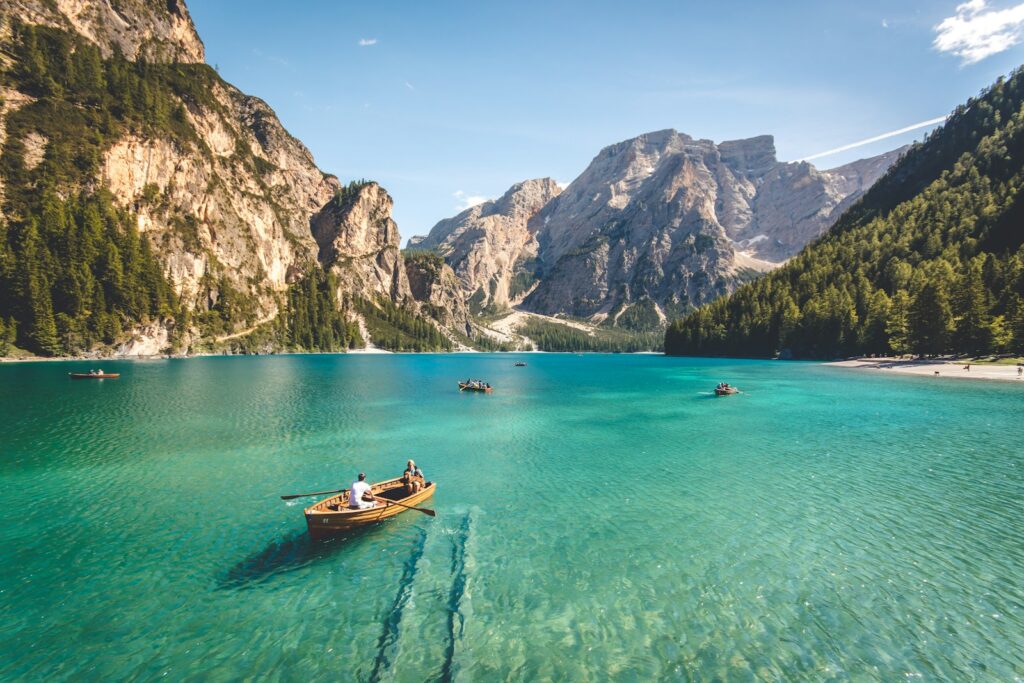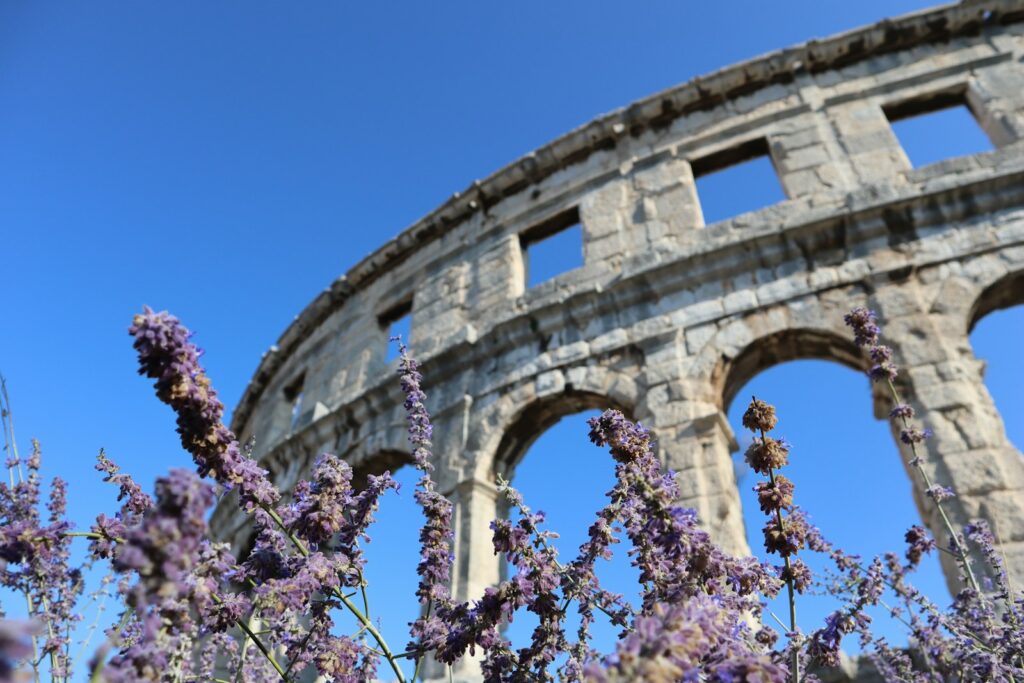
In an era defined by rapid change and a pervasive digital presence, a fascinating counter-trend is gaining considerable momentum: the humble walking tour. Far from being the exclusive domain of hardcore backpackers, these journeys have gracefully evolved, now offering a sophisticated blend of adventure and relaxation that resonates deeply with a diverse demographic, notably Baby Boomers and Gen Xers. As a recent observation in the Wall Street Journal aptly highlights, these pedestrian explorations present an unparalleled opportunity to delve into new destinations, engage in gentle yet invigorating exercise, and immerse oneself in the intricate tapestry of local culture with an intimacy that few other travel formats can match.
This renaissance in travel is not merely about physical movement; it’s a profound shift towards a more authentic and connected way of experiencing the world. Companies like Classic Journeys exemplify this transformation, meticulously crafting guided walking tours that dissolve the complexities of planning, allowing travelers to fully surrender to the unfolding narrative of their chosen locale. From traversing breathtaking scenic trails to ensuring five-star accommodations, the emphasis is squarely on enriching the journey, transforming it from a mere trip into a deeply resonant experience. This growing preference for walking tours, particularly those imbued with historical significance, stems from a confluence of compelling factors that cater to modern travelers’ evolving desires and priorities.
What, then, are the underlying currents propelling this burgeoning popularity, especially for tours that promise a step back in time? It is a multifaceted phenomenon, rooted in fundamental human desires for connection, wellness, knowledge, and meaningful engagement. We embark on a detailed exploration of the primary drivers fueling this captivating trend, revealing why more and more individuals are choosing to uncover the past, one deliberate step at a time.

1. **Desire For Experiential Travel**At the heart of the resurgence of historical walking tours lies a profound human yearning for authentic, immersive experiences. For many Baby Boomers, this desire is a nostalgic echo of their youth, recalling the visceral feeling of connectivity they experienced while backpacking and Eurorailing across Europe as newly minted college students decades ago. They still crave those genuine feelings, seeking to move beyond superficial sightseeing to truly engage with local customs, culture, and cuisine in a more intimate and personal way.
Walking tours, by their very nature, facilitate this deep engagement. They are meticulously designed to be more than just a progression of miles; they are about creating a tapestry of memorable experiences that weave travelers into the local fabric. This could be pausing to savor a breathtaking vista, absorbing local history from an expert guide, or delighting in a meal at a charming, authentic local inn. Every moment is thoughtfully curated to enrich the journey, transforming a passive observation into an active participation.
Companies like Classic Journeys understand this innate hunger for depth. Their tours are crafted with flexibility in mind, accommodating the individual pace and preferences of each traveler. This tailored approach allows participants to truly absorb their surroundings, fostering a sense of discovery and personal connection that conventional tours often miss. It is this commitment to a rich, experiential journey that distinguishes historical walking tours, making them an ideal choice for those who value profound engagement over hurried itineraries.
Read more about: The Autonomous Age: How Driverless Tech is Set to Revolutionize Senior Mobility, Independence, and Community Connection

2. **Health And Fitness Benefits**As health consciousness rises across generations, particularly among aging Baby Boomers, the importance of maintaining an active lifestyle becomes paramount. Walking tours emerge as an exceptionally appealing solution, offering a low-impact form of exercise that can be seamlessly tailored to various fitness levels, all while providing the added incentive of exploring new and captivating destinations. This harmonious blend of physical activity and cultural enrichment aligns perfectly with the desire to stay active and preserve fitness without the strain of high-impact sports.
The health advantages of regular walking are well-documented and significant. Research published in the *Journal of the American Heart Association* revealed that older adults who regularly walked for exercise experienced a remarkable 20% lower risk of heart disease and stroke compared to their inactive counterparts. Furthermore, a study highlighted in the *International Journal of Environmental Research and Public Health* demonstrated that immersing oneself in nature through walking, a common feature of many historical tours, can effectively reduce stress and enhance cognitive function in older adults. These findings underscore the profound physical and mental health benefits inherent in such journeys.
Edward Piegza, 58, the founder and CEO of Classic Journeys, directly links the growing appeal of this travel style among health-conscious Baby Boomers to its inherent fitness benefits. He eloquently explains that it’s not simply about achieving “those 10,000 steps” for its own sake. Rather, the true allure lies in the unique combination of a “low-impact form of exercise that’s connected to exploring new destinations.” This integration of wellness with discovery positions historical walking tours as an ideal choice for travelers committed to both their physical vitality and their wanderlust.
Read more about: The 15 Worst Protein Intake Myths That Trainers Wish You Would Stop Overdoing

3. **Social Connections**In an increasingly digital world, the craving for genuine human connection remains a powerful motivator for travel. Historical walking tours inherently foster this by often involving small, intimate groups, which creates an ideal environment for meeting like-minded travelers. These shared journeys provide ample opportunities for participants to forge new friendships, share experiences, and engage in stimulating conversations, cultivating a sense of camaraderie that enhances the entire trip.
Beyond fellow travelers, these tours offer invaluable chances to interact directly with local guides, who are often residents deeply connected to the history and culture of the region. This interaction satisfies a fundamental desire for authentic human connection and provides unparalleled insights into the destination. These local experts not only navigate the historical pathways but also share personal anecdotes and perspectives, transforming the experience from a mere observation into a meaningful dialogue with the community.
The benefits of strong social networks extend far beyond the travel experience itself. Research published in the *Proceedings of the National Academy of Sciences* indicates a compelling link between social integration and robust social networks and lower mortality rates, alongside improved overall health in older adults. Additionally, a study featured in the *Journal of Aging and Health* found that actively engaging in group activities, such as these walking tours, can significantly diminish feelings of loneliness and markedly enhance mental well-being. Thus, these social interactions become a vital component, enriching the journey while also contributing to the overall health and happiness of travelers.
Read more about: Feathered Dynamos: Unveiling the Thrilling World of North America’s Most Brilliant and Mysterious Jays

4. **Flexibility And Pace**One of the most compelling attractions of historical walking tours, particularly for Baby Boomers, is the promise of a slower, more deliberate pace. This allows travelers to truly absorb their surroundings, savoring the nuances of a destination rather than rushing through a checklist of sights. This relaxed rhythm aligns perfectly with the inclination of many older travelers to undertake longer trips, providing ample time to truly unplug from daily routines and immerse themselves fully in their vacation, fostering a deeper, more meaningful engagement with the places they visit.
These tours masterfully strike a balance between independence and support, offering travelers the freedom to explore at their own chosen tempo while being expertly guided by local specialists. These guides are not just navigators; they are passionate custodians of their region’s history and culture, eagerly sharing their profound knowledge. This structure not only significantly enhances the cultural experience but also provides invaluable peace of mind, especially for individuals who may have health considerations. Knowing that expert assistance is readily available for any unexpected challenges, such as needing help during a hike, ensures safety and comfort throughout the entire journey.
The appeal of this comprehensive support system is eloquently captured by Catherine and Michael Maywood, physicians aged 65 and 64 respectively from the San Diego area. They appreciate how guided walking tours facilitate meetings with locals and deep cultural exploration, all within a framework of comfort and luxury. Furthermore, they are drawn to the five-star hotels and exclusive access to attractions often included in such trips. Having less time for the extensive planning of six-month trips, as they once did, they particularly value how companies like Classic Journeys meticulously handle all the logistical details, effectively taking all planning out of the equation for them.
Read more about: Boomers & Millennials Unite: 14 Things We’re All Officially Done Caring About (Seriously Bye)

5. **Disposable Income**Another significant factor fueling the burgeoning popularity of high-quality historical walking tours is the substantial financial capacity of Baby Boomers. This demographic generally possesses more discretionary income, which they are willing to allocate towards premium travel experiences. Their financial stability later in life allows them to invest confidently in expertly led tours that offer unparalleled value, including unique insights and exclusive, behind-the-scenes access to captivating destinations.
Unlike younger generations, who may be more constrained by budget, Baby Boomers are often capable of affording the higher price tags associated with luxury travel experiences. They prioritize quality, comfort, and a deeper level of engagement, understanding that these elements often come at a premium. This willingness to invest ensures that they receive meticulously planned itineraries, top-tier accommodations, and access to knowledgeable guides who can truly enrich their journey.
While younger generations frequently capture the spotlight in discussions about evolving travel trends, it is crucial to recognize that Baby Boomers remain an extraordinarily significant and influential force within the luxury travel market. Their sustained economic power and discerning tastes continue to shape a segment of the industry that values depth, exclusivity, and impeccable service, making them a cornerstone of the demand for sophisticated historical walking tours. Their investment not only funds these premium experiences but also drives innovation and excellence within the sector.
Read more about: Therapists Reveal the 10 Worst Excuses Holding You Back from Better Mental Health
6. **Embracing Our Past**Historical tours offer far more than just a fleeting glimpse into bygone eras; they serve as a profound bridge, connecting the tangible remnants of the past to the vibrant pulse of the present. These journeys invite participants to literally walk in the footsteps of those who came before us, transforming abstract historical facts into a palpable, living reality. Such excursions are powerful conduits for education, reflection, and inspiration, cultivating a deeper appreciation for the rich heritage that defines our collective identity and reminding us that history is not static, but a dynamic, unfolding narrative.
One of the primary benefits is the profound educational value these tours provide. They offer a tangible, immersive context that transcends the confines of textbooks. For instance, a visit to the solemn grounds of the Gettysburg Battlefield transforms abstract Civil War statistics into a visceral reality, allowing one to almost perceive the distant echoes of battle cries and feel the immense weight of the decisions made there. This direct engagement fosters a more comprehensive understanding and retention of historical events than any classroom lecture could achieve.
Furthermore, by actively participating in these tours, we become vital contributors to the enduring cultural preservation of local traditions and architectural marvels. The beautifully restored Victorian homes, affectionately known as the Painted Ladies of San Francisco, stand as a testament to the city’s vibrant past. Each carefully chosen color and intricately carved spindle whispers stories of its cultural fabric, preserved for future generations through the appreciation and economic support generated by visitors.
These tours also significantly bolster community engagement and pride. Events like the annual Heritage Days in towns such as Charleston warmly invite both locals and tourists to collectively celebrate the city’s storied past. This shared experience fosters a powerful sense of belonging and continuity, strengthening community bonds while simultaneously educating outsiders. Moreover, historical tourism plays a crucial role in supporting local economies, with bustling markets and artisan shops that often thrive near historical sites, such as those found within the ancient labyrinthine alleys of Jerusalem’s Old City, providing livelihoods and sustaining traditional crafts.
On an intimately personal level, historical tours offer individuals the extraordinary opportunity to connect with their own ancestry and personal narratives. A visit to Ellis Island, for example, can be an incredibly profound and moving experience for someone tracing their family’s immigrant roots, effectively bridging the vast expanse between their personal past and present. Through these multifaceted lenses, historical tours transcend mere excursions; they become transformative, immersive experiences that deeply resonate with the soul of a community, illuminating how history is a living, breathing narrative that perpetually shapes our contemporary world.
Read more about: Boomers & Millennials Unite: 14 Things We’re All Officially Done Caring About (Seriously Bye)

7. **The Role of Historical Tours in Education**Embarking on a journey through the corridors of time, historical tours offer a tangible connection to the past, allowing participants to immerse themselves in ancestral experiences. These excursions link abstract textbook knowledge to the concrete world, enriching education. They provide a multisensory approach to learning, where sights, sounds, and atmosphere of historical sites deepen understanding and retention of facts.
One profound aspect is direct engagement with primary sources. Visiting the Anne Frank House in Amsterdam allows students to grasp World War II narratives personally, often beyond classroom discussions. This immediate interaction with sites where history unfolded brings powerful reality to events that might otherwise feel distant or academic.
Being physically present in historical locations, such as the Roman Colosseum, helps learners grasp the scale and significance of events, fostering a unique contextual learning environment beyond textbooks. Tours often present multiple narratives and perspectives, especially at sites like Gettysburg Battlefield, prompting critical analysis and discussion about historical interpretations and their impact.
Beyond facts, these journeys cultivate cultural sensitivity. Walking through historical neighborhoods like New Orleans’ French Quarter offers insights into cultural fabric, enhancing appreciation for diversity. Sites of memory, such as the 9/11 Memorial & Museum, serve as places for reflection, contemplating historical consequences and the importance of peace. These immersive experiences complement traditional methods, inspiring lifelong interest, transforming historical education into an active, living exploration.
Read more about: Navigating the Bureaucratic Backroads: A MotorTrend Guide to the Most Challenging States for Classic Car Registration and Inspection Laws
8. **More Than Just Buildings**When considering the conservation of our past, it’s crucial to recognize it encompasses far more than mere preservation of physical structures. It’s a multifaceted endeavor safeguarding stories, traditions, and collective memory, breathing life into the fabric of societies. This holistic approach to heritage conservation is essential for fostering identity and continuity in an ever-changing world.
A compelling illustration is found in cultural practices and rituals. In Kyoto, Japan, the annual Gion Matsuri festival, originating in the 9th century, is a living tradition involving the entire community. Intricate float construction, music, and performances are as much a part of the city’s heritage as any temple or shrine. Similarly, intangible heritage champions skills and traditions lacking physical form.
The art of Neapolitan ‘Pizzaiuolo’—pizza making in Naples, Italy—inscribed on UNESCO’s Intangible Cultural Heritage list, highlights culinary traditions as a key component of heritage, transcending physical monuments. Furthermore, language preservation, exemplified by revitalization efforts for the Māori language in New Zealand, powerfully demonstrates intangible heritage. Through initiatives like Te Wiki o te Reo Māori, the language is celebrated and promoted, ensuring its survival.
In Africa, the tradition of griot storytelling serves as a vital conduit for transmitting history, moral lessons, and entertainment. Griots are more than storytellers; they are custodians of their communities’ histories and cultures. By embracing these diverse elements—from festivals and culinary arts to languages and oral traditions—historical tours offer a richer, more immersive experience that ventures beyond visual architecture, connecting participants to our shared human heritage.
Read more about: Unlock Peace of Mind: Simple Secrets to Getting the Best Deal on Travel Insurance for Seniors

9. **Engaging with History**In every community’s heart lies a treasure trove of stories, waiting to be unearthed and shared. These narratives, woven into local streets and landmarks, offer a unique opportunity for residents and visitors to connect with the past dynamically. Historical tours allow individuals to experience history, not just learn it, bridging present to bygone eras. Walking in the footsteps of ancestors fosters a deeper understanding and appreciation for a community’s heritage.
Storytelling is a powerful tool, transforming facts into vivid experiences. A guide recounting a local war hero’s bravery on the battleground makes the past palpably alive. To enhance learning, some tours incorporate sensory elements like period music or traditional food tastings. Imagine haunting civil war melodies or rustic colonial-era meal flavors, providing a taste of life from another time.
Many tours also include interactive components, such as historical reenactments or augmented reality (AR) to superimpose historical images onto the modern landscape. These elements entertain and create memorable learning moments that stick with participants long after the tour. Local residents often play a crucial role, volunteering as guides or actors, strengthening community bonds and pride. A tour might feature a local artisan demonstrating traditional crafts, offering hands-on history.
Schools frequently collaborate with tour organizers for immersive educational experiences. A class might visit a historical farm, engaging in activities like churning butter or tending heritage breed animals, gaining insights into past agricultural practices. Through these multifaceted approaches, historical tours do more than inform; they inspire. They ignite curiosity and provide a platform for dialogue, debate, and reflection. By engaging with history interactively, participants gain a nuanced understanding of forces shaping their community, fostering identity and continuity.
Read more about: Is the 2025 Honda HR-V a Practical City Crossover? An In-Depth Consumer Reports Review

10. **Planning a Historical Tour**Embarking on a journey through the annals of time demands meticulous orchestration, where every detail contributes directly to the immersive experience. It begins with selecting a compelling theme resonating with the community’s heritage, culminating in seamless execution that leaves attendees with profound appreciation for the past. This unseen process, the bedrock of memorable historical tours, ensures accuracy and impact.
The cornerstone of any successful historical tour is its theme, providing focus for the journey. A tour of the Industrial Revolution might visit old factories, while a Civil Rights movement theme could involve significant protest sites. Meticulous research and collaboration with seasoned historians and local experts are paramount. A Colonial Williamsburg tour, for example, benefits immensely from expert insights, ensuring historical accuracy and depth.
Precise route planning is vital after thematic foundation. The path must be geographically logical and tell a compelling story, guiding visitors through a narrative arc. Boston’s Freedom Trail, for instance, expertly leads visitors through historic sites narratively. Painstaking attention to logistics—transportation, timing, and accessibility—is crucial for a smooth experience. Gettysburg Battlefield bus tours exemplify how efficient logistics allow visitors to effortlessly traverse vast historical areas.
To genuinely bring history to life, interactive elements are key. Vivid reenactments or sophisticated multimedia presentations seamlessly weave into tours, transforming passive observation into active engagement. The Roman Gladiator School, offering hands-on combat lessons, enriches education through participation. Effective marketing and outreach through diverse channels are indispensable for maximum reach. Widely publicized Heritage Days in Europe, for example, attract diverse audiences. The unseen efforts of dedicated planners, combined with enthusiastic community participation, realize the true value of these tours, fostering a deeper connection to our shared human history.
Read more about: Demystifying Land Measurement: Your Ultimate Guide to Acres and Square Feet, From History to Handy Conversions
11. **Modern Enhancements**The dynamic realm of historical exploration has been revolutionized by the ingenious fusion of cutting-edge technology with time-honored practices. This powerful synergy enriches the narrative of historical tours, ensuring their relevance in our rapidly evolving digital age. By thoughtfully harnessing modern tools, deeply immersive experiences can now transcend traditional boundaries, allowing participants to engage with history in previously unprecedented ways, making it more accessible and impactful.
One of the most exciting innovations is Augmented Reality (AR). AR applications overlay historical facts and intricate scenes onto the real-world environment, providing a dynamic, interactive layer of information. Visitors at the Roman Colosseum, for example, might use AR to see the ancient structure restored to its original grandeur, complete with virtual gladiators. Complementing this, Virtual Reality (VR) technology places users within simulated historical environments. Historical tours leverage VR to transport individuals back in time, offering a 360-degree view of pivotal events, such as walking the decks of the Titanic as it appeared in 1912.
Mobile applications are indispensable tools for personalized tours. Smartphones host apps providing interactive maps, detailed descriptions, and audio narratives, enriching the visitor’s journey. The Freedom Trail app in Boston, for example, guides tourists with compelling storytelling. Digital archives and databases also offer incredible opportunities for deep dives into historical records and artifacts. Researchers and tourists can access documents and images once inaccessible. The British Library’s ‘Turning the Pages’ is an interactive tool allowing users to virtually flip through rare historical manuscripts.
Social media integration transforms experience sharing, becoming part of modern tours. Sites and operators use hashtags or filters to encourage visitor posts, reaching wider audiences and sparking interest. Furthermore, 3D reconstruction and printing enable accurate recreation of artifacts and sites. Museums display detailed replicas of fragile or lost artifacts, like the Palmyra Arch, reconstructed via 3D printing. These advancements preserve heritage, adapt to tech-savvy generations, and serve as a vibrant bridge, making history accessible and engaging for all.
Read more about: Is the 2025 Honda HR-V a Practical City Crossover? An In-Depth Consumer Reports Review
As we look back at the myriad reasons propelling local history tours – from authentic experiences and wellness to profound connection and embracing our past – it’s clear this isn’t a fleeting trend. It’s a testament to a deeper human need to understand our origins, touch tangible history, and weave ourselves into civilization’s ongoing narrative. These tours, enhanced by technology and rich in education and culture, offer a transformative journey for mind, body, and soul. They invite us from digital clamor into yesterday’s echoes, reminding us that every cobblestone and whispered tale holds a piece of who we are. The future of historical tourism is a vibrant invitation to connect, learn, and truly belong.





